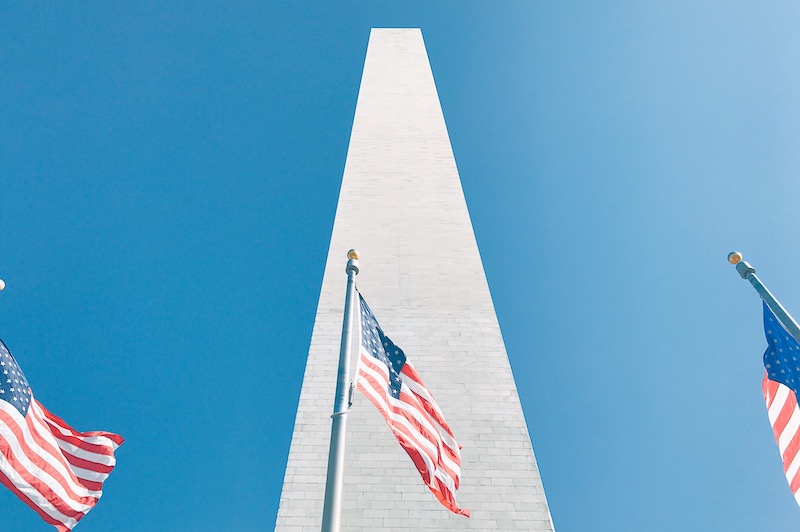Religious freedom is a more significant topic of conversation now, in 2017, than it has been in perhaps decades. Less than a month into President Donald Trump’s new administration, the so-called “Muslim Ban” was signed via executive order, followed soon after by the President’s claims that religious freedoms are “under threat.”[1] With contentious social issues continuing to conflict with the perceived infringement of religious liberties, it is likely that, in the coming years, religious issues will play a substantial role in state and federal jurisprudence. In 2015 alone, seventeen states introduced legislation relating to religious liberty.[2]
Despite heated media coverage surrounding the passing of the controversial Indiana Religious Freedom Restoration Act (RFRA) in 2015, few people know that a total of twenty states already have RFRA statutes, including Alabama’s constitutional amendment to the same effect. The vast majority of religious liberty scholarship currently focuses on the federal Religious Freedom Restoration Act,[3] rather than its related state iterations. Hence, it remains unclear what the actual impact of these state laws has been.
This project is particularly relevant because it is the first study to have successfully measured the success rates of state RFRA claims in state and federal courts. In it, I have examined the literature surrounding the federal and state RFRAs, as well as numerous studies measuring the success rates for free exercise claims in state and federal courts. The different measurements and conclusions of these studies are summarized and distinguished from one another. Importantly, through this research, I managed to assemble a dataset of state RFRA decisions that is large enough to measure protection rates, and from which I was able to draw some tentative conclusions.
Research findings
The primary findings show that free exercise claimants are successful in 17 percent of federal court decisions, and 11 percent of state court decisions. When weighted for the distribution of cases, this results in a combined protection rate of 14.2 percent.[4] This rate is significantly lower than nearly all other measurements of free exercise cases in previous studies. However, the 11 percent success rate observed in state courts is in line with certain other studies which are explored in my literature review.
Previous studies attempted and failed to measure the success rate of state RFRAs, frustrated by an apparent paucity of claims under the state RFRA statutes. They could only conclude that claims under these statutes were “exceedingly rare.”[5] Part of this may be attributed to a failure to use appropriately broad search terms such as the multi-level system identified by my project. Additionally, most of the previous scholarship failed to include a dataset since 80 percent of state RFRA cases have taken place since 2006. Compared to the 1996–2006 period, over the past decade, there has been a significant increase in frequency in these cases. Although, in my research, I also found that in certain states claims remain exceedingly rare, with about 85 percent of state RFRA claims occurring in just 8 of the 21 states. Overall, the increasing frequency of state RFRA claims may point to a trend of increased litigation under these statutes, in the near future.
While I am of the mind that not “enough case law exists to allow us to draw generalizable, empirical conclusions,”[6] I believe this study to be particularly valuable since I established a baseline measure of the success of state RFRA claims in both federal and state courts. While state RFRA statutes are no doubt legislated with the intent of increasing religious freedom protection, it appears that the opposite may, in fact, be occurring. Concluding that relatively few cases are litigated in the first place, is a significant finding, but it is perhaps even more significant that state RFRA cases appear to be granted even lower levels of protection than other religious liberty claims litigated in the same jurisdictions. It is necessary to note that the quantitative research I have done is not the entire picture, and extensive research remains to be done, especially on the potential qualitative effects of state RFRAs. It is possible that merely measuring the quantitative success rate of cases may fail to capture certain ways in which the existence of these laws may still increase religious liberty protections.
This project proposes several tentative causes for these phenomena, as well as a preliminary solution. Anti-plaintiff bias and advantages enjoyed by government actors in the appellate court system may be contributing factors. These appear to be exacerbated when combined with a civil liberties claim, as state RFRA cases are. In addition, it appears that there is a cycle of circular deference in which neither state nor federal courts wish to set precedent on state RFRA claims. This thesis proposes that state courts ought to boldly set precedent with increasing frequency on matters of state civil liberties. When possible, rather than postponing their decisions so they may defer to federal precedent, state courts ought to embrace an invigorated state constitutionalism and base their decisions on their state constitutions when possible.
[red_button url=”http://www.valuesandcapitalism.com/wp-content/uploads/2017/11/2016-2017-Young-Scholar-Awards-Program-Publication-8-38.pdf” style=”orange” size=”large” type=”square” target=”_self”] READ TAYLOR’S FULL PAPER [/red_button]
[1] “National Prayer Breakfast: Donald Trump Transcript.” Time Magazine. Time, 2 Feb. 2017. http://time.com/4658012/donald-trump-national-prayer-breakfast-transcript/.
[2] “2015 State Religious Freedom Restoration Legislation.” September 3, 2015. Accessed February 27, 2017. http://www.ncsl.org/research/civil-and-criminal-justice/2015-state-rfra-legislation.aspx.
[3] Religious Freedom Restoration Act, U.S. Code 42 (1993), §§ 2000bb.
[4] Excluding state trial court data.
[5] Christopher C. Lund, “Religious Liberty After Gonzales: A Look at State RFRAs,” South Dakota Law Review 55 (2010): 467.
[6] Robert R. Martin, “Faith in the Balance? An Evaluation of the Outcomes of Religious Free Exercise Claims in the State Appellate Courts, 1997-2011,” Pennsylvania State University, 2013, 146.


